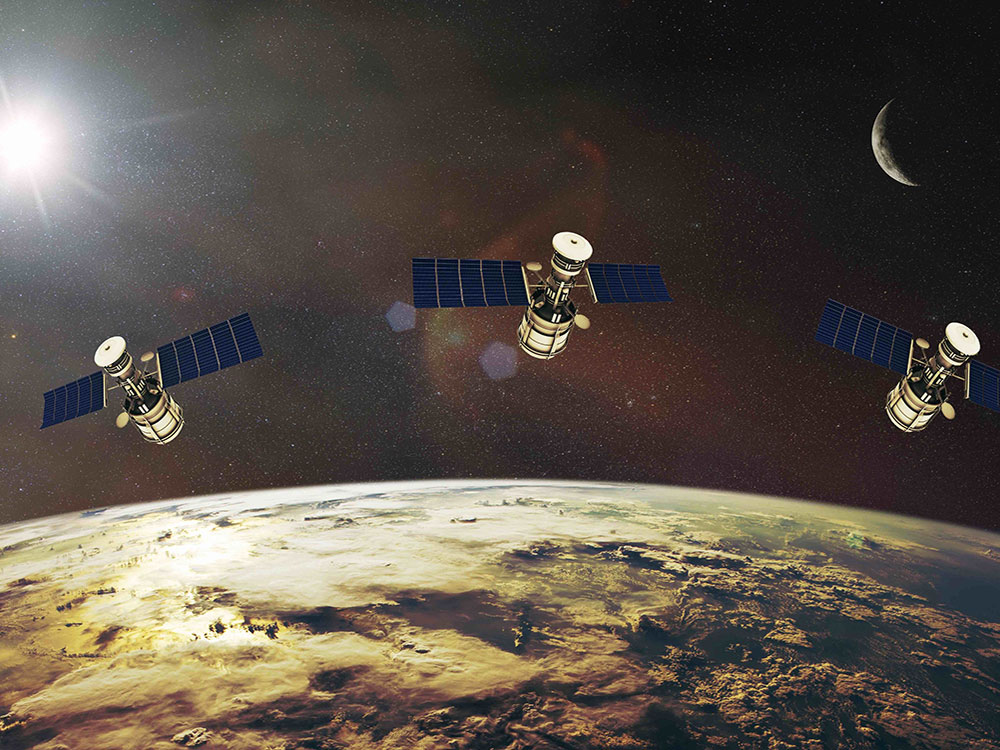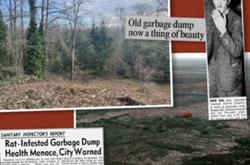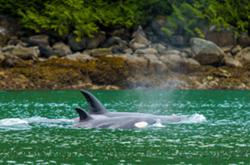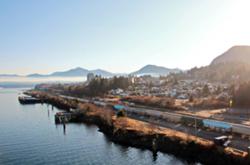Every gold rush triggers legal, political and environmental questions. Who owns the wealth? Whose power guarantees ownership? And who has to deal with the mess left behind?
A gold rush is going on right now, high over our heads: a race to stake claims in outer space, and thereby gain wealth and power — at our expense.
I well recall the 1957 launch of Sputnik, the first artificial satellite. It caused a political upheaval that continues to this day, as nations compete to gain an advantage on Earth from their presence in space.
In the journal Science, four researchers at the University of British Columbia write that over 11,300 satellites have followed Sputnik into orbit. Many of them are “constellations,” groups of satellites working together to maintain internet or GPS services all over the planet.
Elon Musk’s Starlink is a “mega-constellation” of about 4,500 satellites. It attracted little public attention until recent reports indicated that in 2022 Musk had denied the Ukrainian armed forces access to Starlink data that would have enabled them to attack the Russians in Sevastopol.
But the UBC researchers warn that we haven’t seen anything yet. Plans call for up to a million new satellites in the near future. They will pose political, legal and environmental problems we haven’t even begun to consider.
The Science article was written by four academics from across UBC: Andrew Falle and Michael Byers (political science); Ewan Wright (interdisciplinary graduate studies); and Aaron Boley (physics and astronomy). It describes how various companies and countries have filed plans with the International Telecommunication Union to launch mega-constellations far bigger than Starlink. ITU regulations determine the terms and conditions under which governments and corporations can launch communications satellites.
Over 300,000 satellites in ‘low Earth orbit’
In September 2021, the government of Rwanda filed a plan called Cinnamon-937. It calls for a total of 337,320 satellites to be placed in what are called low Earth orbits. This was the filing that first drew the attention of the UBC researchers.
In an email interview, two of the article's authors, Andrew Falle and Ewan Wright, told The Tyee that Cinnamon-937 wasn’t taken very seriously by the media covering space projects: “The general response was pessimistic that this was a real project.”
Then it emerged that an experienced satellite entrepreneur, Greg Wyler, was behind Cinnamon-937. Wyler had set up a French-American company, E-Space, and had filed Cinnamon-937 through Rwanda. Whether or not Wyler’s company ever launches anything like 300,000 satellites, it now has rights to extensive parts of the radio spectrum assigned to Cinnamon-937. It could well lease or sell some of those rights to other governments or corporations.
Two of the UBC researchers, Byers and Boley, have meanwhile published a new book, Who Owns Outer Space? International Law, Astrophysics, and the Sustainable Development of Space. It dedicates two chapters to mega-constellations and what international law says about them.
A mega-constellation of space junk
One big problem has existed for decades and is likely to get worse: space junk. Along with functioning satellites, space is full of dead ones, plus rocket bodies, scrap metal and even flecks of paint. The bigger stuff is tracked, but Byers and Boley estimate untracked junk at “about one million pieces... for sizes greater than one centimetre in diameter.”
Every time a piece of space junk hits another, it’s likely to fragment. “Eventually,” Byers and Boley write, “collisions could become the dominant factor changing the orbital environment, a situation called the Kessler-Cour-Palais syndrome, which could in some scenarios leads to a collisional chain reaction — essentially, runaway space debris.”
It doesn’t help that both Russia and China have conducted anti-satellite weapon tests, both of which added thousands of high-speed fragments to low Earth orbit. Then, in 2021, China’s space station had to be moved twice to avoid collisions with Starlink satellites.
Whether headed for low Earth orbit or geosynchronous orbit, every new satellite must rise through “orbital shells” containing both other satellites and junk. When satellites’ five- or six-year life is over, they de-orbit, falling into the atmosphere and burning up. Ascent and descent are equally likely to see collisions — and the more satellites, the more collisions.
What’s more, Byers and Boley warn, “while orbital debris will likely remain the most significant threat to mega-constellations, we can also anticipate regular satellite failures due to meteoroid impacts.”
They go on to say: “In a worst-case scenario involving a collisional cascade, hundreds, perhaps even thousands, of satellites could be disabled or destroyed, although this outcome might take considerable time to develop.” And to litigate.
An uncontrolled experiment in climate change
Byers and Boley estimate that most of a 260-kilogram Starlink satellite is made of aluminum, which will burn up in the atmosphere, “with an average of about 1.4 tonnes re-entering Earth’s atmosphere daily.” This amounts to accidental geo-engineering, and the authors speculate that so much aluminum interacting with the atmosphere “might have a net warming effect through the absorption of longer-wave radiation.... Mega-constellations will now begin this process as an uncontrolled experiment.”
If a satellite survives re-entry into the atmosphere, it may cause damage or death. Byers and Boley cite the case of Kosmos 954, a Soviet satellite that contaminated a large part of the Northwest Territories with radioactivity. Canada filed a claim against the Soviet Union, whose government agreed to pay compensation. Not all states might be so obliging in future, and existing laws need to be clarified and strengthened.
“Collisions involving mega-constellation satellites are entirely foreseeable,” the authors write. “They have the potential to create vast amounts of long-lasting debris, including debris that is untrackable but still lethal, with severe consequences for the future use of LEO, for the global economy and even for human safety. The time to act is now.”
Altering the night sky as we know it
Today’s satellites already pose a problem for astronomers because many are so bright that they ruin observations by “photo-bombing” them. Add 300,000 more, and astronomy will become a dead science. “Instead of the night sky as we have known it for millennia,” Byers and Boley write, “one out of every 10 stars will be a satellite streaking across the sky.”
Byers and Boley note that under the 1967 Outer Space Treaty, astronomers have some legal recourse against satellite launchers, since the treaty defines astronomy as a form of space exploration and use. But the creators of mega-constellations may not be able to keep their satellites invisible and might prefer to fight the issue out in court.
In their Tyee interview, Falle and Wright did some math and concluded that a project like Cinnamon-937 is unlikely to prosper: “If these were the cheapest possible CubeSats (1 kilogram each, US$50,000), the 330,000 satellite mega-constellation would cost US$16.5 billion, plus development costs, launch costs, user terminal costs.... There is no clear business case for that, let alone return on investment.”
Falle went on to say: “E-Space are certainly not going to launch hundreds of thousands of satellites. But tens of thousands seems like a feasible number for companies like SpaceX, or states like China.... Other constellations have tens of thousands of satellites that might really launch — including second-generation projects from SpaceX, One Web and state-backed constellations including from China. If these are in the tens-of-thousands of satellites, we will still have an even worse environmental problem.”
Meanwhile, we will remain glued to our phones and laptops without a thought for how they provide us with our information. Unless Canada and other counties push hard to strengthen international space law, we may log in one morning to all the information that Elon Musk or Xi Jinping feels like giving us. ![]()
Read more: Science + Tech, Environment

















Tyee Commenting Guidelines
Comments that violate guidelines risk being deleted, and violations may result in a temporary or permanent user ban. Maintain the spirit of good conversation to stay in the discussion and be patient with moderators. Comments are reviewed regularly but not in real time.
Do:
Do not: